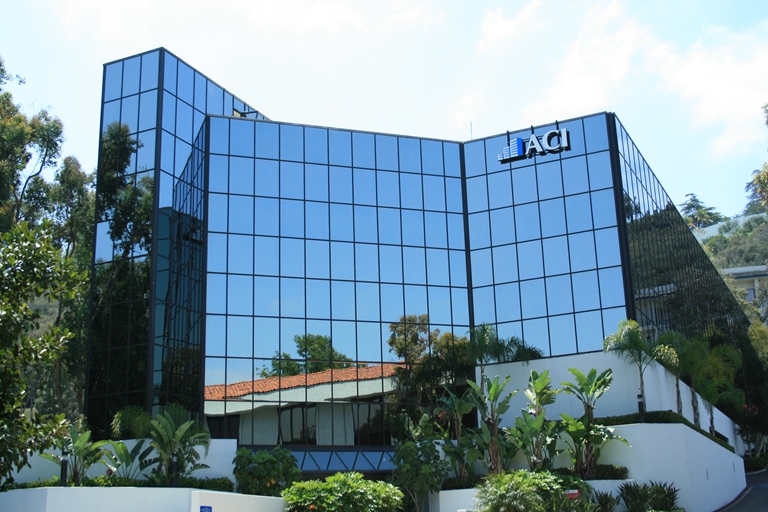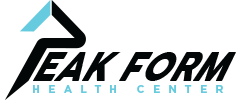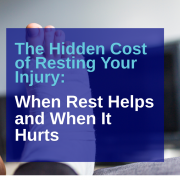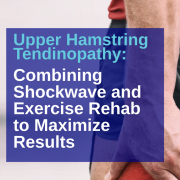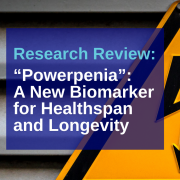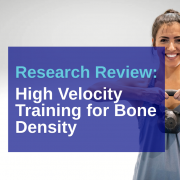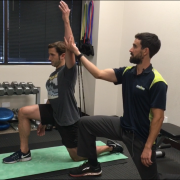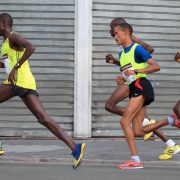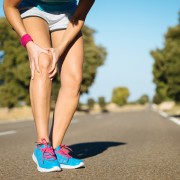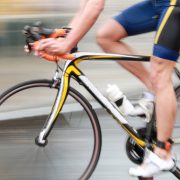Posts
The Hidden Cost of Resting Your Injury
/in running injury, Shockwave Therapy, Shockwave treatment, Sports Injury, Training/by adminStruggling with deep, nagging pain in your lower glute that flares up when you sit or run? Upper hamstring tendinopathy can be stubborn, but a combination of shockwave therapy and progressive exercise rehab is the key to lasting relief and tendon resilience—learn why this approach works best!
Upper Hamstring Tendinopathy: Why Combining Shockwave Therapy with Exercise Rehab Is a Game Changer
/in running injury, Shockwave Therapy, Shockwave treatment, Sports Injury, Training/by adminStruggling with deep, nagging pain in your lower glute that flares up when you sit or run? Upper hamstring tendinopathy can be stubborn, but a combination of shockwave therapy and progressive exercise rehab is the key to lasting relief and tendon resilience—learn why this approach works best!
Strengthening Bones with High Velocity Resistance Training (HVRT): A Guide for Those with Osteopenia and Osteoporosis
/in Bone Density, Training/by adminStrengthening Bones with High Velocity Resistance Training (HVRT): A Guide for Those with Osteopenia and Osteoporosis
For anyone managing osteopenia or osteoporosis, finding safe, effective ways to protect and strengthen bone health is critical. A recent systematic review, focused on high velocity resistance training (HVRT), provides valuable insights on how this type of training can benefit bone mineral density (BMD) in older adults—particularly at the lumbar spine, hip, and femoral neck, which are key areas prone to fractures.
What is HVRT?
High velocity resistance training (HVRT) is a form of exercise that combines speed with strength, emphasizing powerful, controlled movements that target muscle and bone. Unlike traditional resistance training, HVRT often involves quicker concentric (lifting) movements paired with slower eccentric (lowering) movements, which engage the muscles attached to bones in ways that promote bone health.
Key Findings from the Review
This review included 25 studies, totaling over 1,200 participants. Here’s what it found:
- Small but Significant Gains in Bone Density: The review found that HVRT programs, when performed twice or more weekly, had a significant positive impact on BMD in older adults. Increases ranged from 0.9% to 5.4%, primarily in the lumbar spine, femoral neck, and total hip.
- Consistency is Crucial: Importantly, studies showed that BMD improvements were lost if exercise was stopped for six months or longer. Thus, consistency is essential to maintaining gains.
- Multimodal Programs Enhance Outcomes: Programs that combined HVRT with other exercises, such as balance and flexibility work, tended to show even better results. This blend of exercises seems to create a synergistic effect that further supports bone density.
- Longer Duration Leads to Better Results: Programs lasting six months or more tended to yield the most notable BMD improvements. Bone remodeling is a slow process, so longer-term commitments to HVRT are recommended.
Practical Takeaways for Improving Bone Health
1. Consider HVRT as Part of Your Routine
- Minimum Frequency: Aim for at least two HVRT sessions per week.
- Duration: Commit to at least six months of consistent training to see meaningful changes in bone density.
- Controlled Environment: HVRT is best done in a safe, supervised setting, such as with a trainer experienced in osteoporosis-friendly exercise regimens, especially for those new to resistance training.
2. Blend HVRT with Other Exercises
- Including balance exercises, flexibility work, and moderate-impact activities (like walking or light jogging) can amplify the osteogenic effects of HVRT, helping to strengthen not only bones but also the muscles and ligaments supporting them.
3. Avoid Long Breaks
- If you stop training for six months or more, you risk losing any gains in BMD. Schedule your workouts as part of your weekly routine, and avoid long gaps to maintain bone strength.
Making It Work for You: Safety First
For many, the idea of high velocity training can sound intimidating, especially if you’re managing a condition like osteoporosis. However, HVRT can be modified with machines or lighter weights to accommodate different ability levels safely. Additionally, explosive movements can be adjusted to fit your fitness level—there’s no need to engage in highly intense or Olympic-style lifting to benefit from HVRT.
Beyond Bone Health: Preventing Sarcopenia and Powerpenia
Alongside improving BMD, HVRT may also help prevent sarcopenia (age-related muscle loss) and powerpenia (decline in muscle power). Sarcopenia and powerpenia are serious issues for older adults, leading to reduced mobility, higher fall risk, and overall decreased quality of life. HVRT, with its focus on explosive movements, can help retain both muscle mass and power, essential for everyday tasks and fall prevention.
For more on powerpenia read our full article here.
Take Control of Your Bone Health
For those diagnosed with osteopenia or osteoporosis, HVRT offers a promising, science-backed way to take control of bone health. Start by consulting with your healthcare provider and a qualified trainer who can help design a safe, effective HVRT program tailored to your needs. With commitment and the right guidance, you can build a sustainable exercise routine that strengthens your bones and supports long-term health.
Let’s build stronger bones—starting today!
C
REFERENCE: Haque, I., Schlacht, T. Z., & Skelton, D. A. (2024). The effects of high velocity resistance training on bone mineral density in older adults: A systematic review. Bone, 179, 116986. https://doi.org/10.1016/j.bone.2023.116986
3 Food Products That Supercharge Recovery: Tart Cherry Juice, Watermelon, and Pineapple
/in Tips/by adminHow to Perform an Effective Hip Flexor Stretch
/in Back Pain Prevention, Conditions, Sports Injury/by adminA Safe and Effective Hip Flexor Stretch
The main muscles that make up the “hip flexors” are the rectus femoris, iliacus, and psoas major. This muscle group can become overactive and tight resulting in a variety of musculoskeletal issues. Many people perform a hip flexor stretch as a routine, or to help with a specific condition: knee pain, hip pain, back pain. Unfortunately, we see many patients who are performing a hip flexor stretch incorrectly and are exacerbating their condition. Take back pain as an example. Tight hip flexors can cause abnormal posture through the low back resulting in joint compression and irritation. Many patients will then stretch the hip flexors aggressively to help alleviate the symptoms. However, in an effort to loosen up the hip flexors, patients are compromising their low back by compressing a twisting the joints. To stretch the hip flexors properly, there are a few cues that you want to pay close attention to. Take a look at the following video; we go through the proper set up and execution of a safe hip flexor stretch.
Now, if you search “Best hip flexor stretch” you will get thousands of results and some are going to look really cool, and effective. At our chiropractic office in Mission Valley, San Diego we strive for keeping the exercises simple, accessible, and effective. Many of the “cool” or “aggressive” hip flexor stretches often put patients into compromised positions for their condition. Try this version of the hip flexor stretch. If you are suffering from low back, knee, or hip pain, please schedule with us to get a full evaluation. We specialize in treating sports injuries and tight hip flexors are a common presentation we see in our athletes as well as our workforce patients. Our office, Peak Form Health Center, is conveniently located off Texas Street, in Mission Valley, San Diego.
Get Ready for the San Diego Rock ‘n’ Roll Marathon
/in running form, running injury/by adminThe San Diego Rock ‘n’ Roll marathon is coming up! You are likely finishing your build phases of training and are headed into a much needed taper to help rebuild your body before the big day. Now that training volume has decreased, you have more time to address your body to get it into tip top shape before race day. Beyond foam rolling, stretching, and mobility work, the following are services that can help decrease tightness, soreness, aches, and pains before your big day. Our office accepts most major insurances and offers affordable cash rates. Our San Diego Chiropractors treat runners and running injuries on a daily basis using the following techniques:
Active Release Technique– Our staff is trained in Active Release Technique which is a state of the art soft tissue injury management system. Our chiropractors utilize ART to help reduce tightness and soreness at isolated parts of the body. For example, many runners feel tight in their hips and quadriceps following long runs. One or two ART sessions before the Rock ‘n’ Roll Marathon can help rid the muscles of that tightness.

Graston Technique– While training for the Rock ‘n’ Roll Marathon, if any injury is long standing, particularly in a tendon, Graston is excellent to get ample blood supply to that area. Our San Diego Chiropractor will sometimes have runners perform movements while using the Graston tools to help facilitate movement between the fascia and muscles. Bascially, your muscles move better so you do not feel tight and sore before your race!

Spinal Manipulation– If your back is stiff and lacks proper range of motion, spinal adjustments may be the right treatment for you. Spinal manipulation is an excellent treatment to help restore proper joint mobility. Spine stiffness is a common complaint in runners especially when training for a marathon due to the long hours of training and consistent bouncing motion into the spine.
Massage Therapy– Our massage therapist is an avid runner and endurance athlete. If you have numerous areas of tightness and soreness, schedule a massage to have a nice once over to all of those complaints.
Head into your race feeling as healthy as you can and you will see great results. After the San Diego Rock ‘n’ Roll Marathon, we recommend our runners to receive treatment about once every 4 weeks to help reduce tightness in the common running muscles and joints. Our office is conveniently located in Mission Valley, San Diego near the Rock ‘n’ Roll Marathon course!
Good luck in the San Diego Rock ‘n’ Roll Marathon!
New Methods in Treating IT Band Syndrome
/in Knee Pain, running injury, Sports Injury/by adminIT band syndrome remains a stubborn condition that our chiropractors treat at our office in Mission Valley, San Diego. Runners, triathletes, and cyclists are the main groups of people who we treat for this condition. We previously posted treatment recommendations for IT band syndrome (found Iliotibial Band Syndrome) but wanted to update the information regarding treatment. The previous post still highlights relevant treatment advice in terms of research based treatment. Continue below to see the most recent types of treatment our San Diego chiropractors utilizes to best treat IT band syndrome.
Do you truly have IT band syndrome?
Many patients self diagnose their knee pain as IT band syndrome. They may be correct but true IT band syndrome is characterized by outside (lateral) knee pain right at the bony attachment of the IT band. It is often worse with repetitive movements such as running, walking, hiking, and cycling.
There are many cases that we have seen where the patient is experiencing general knee pain and were diagnosed with IT band syndrome. After our chiropractor evaluates the knee pain, it is often found that the person is experiencing knee pain due to muscle imbalances between the front of the thigh and back of the thigh. The pain and discomfort is often due to very tight and sore quadricep muscles. IT band syndrome is diagnosed because the IT band itself is found superficial to the outside quadricep muscle.
These patients are categorized as “quad dominant” and our San Diego Chiropractor works on the tight/sore quadricep muscles while strengthening the back thigh muscles, namely the gluteus maximus and hamstrings. Along with general strengthening and stretching, the patient must be taught how to use the glute muscles and hamstrings more during their activity.
New Treatment Approaches
We have had a lot of success using various types of myofascial release. Our San Diego Chiropractors have been trained in Active Release Technique and Graston Technique. Cupping is another therapy that has been used to help increase mobility between muscle fibers. Using motion with different types of myofascial techniques is especially helpful for treating IT band syndrome in runners, cyclists, and triathletes. The movement with myofascial work helps create mobility between layers of muscle/fascial tissue that often gets “bound up” with the constant repetitive stress from the sports mentioned previously. Take a look at the videos demonstrating IT band syndrome treatment:
Cupping used during athletic movements to decrease tissue compression and increase blood flow
Active Release Techique applied to the quadricep and IT Band
Strengthening the Hips for IT Band Syndrome
The previous article (found Here Iliotibial Band Syndrome) we wrote discussed several exercises that are still beneficial for IT band syndrome. We are finding even more success with more aggressive glute and hamstring exercises to help stabilize the hip and knee. Below is one of our favorite hip extension exercises. You can perform it one side at a time to make sure you are getting the most out of each hip. Our San Diego chiropractor treats many running injuries and will also assess different muscles groups to help establish proper running form.
If you are experiencing IT band syndrome, it is important to get evaluated by a sports chiropractor. Our San Diego Chiropractors work with all types of athletes. Each treatment is unique to the individual but likely includes some form of myofascial release, stretching, and strength training. Our office is conveniently located in Mission Valley, San Diego.
Cycling Knee Pain Treatment
/in cycling injury, Knee Pain, Sports Injury/by adminMost cyclists at one point or another experience knee pain when riding their bike. There are many types of cycling knee pain and many different causes. In majority of cases, knee pain from cycling is due to overuse of the muscles/tendons around the knee joint. The complicating factor is the bike itself and how you are fit on that bike. A dialed in bike fit will allow your body to absorb the forces that hard cycling produces. If your knee joint, is working in a strained position, the muscles and tendons will eventually fail once a certain volume and/or intensity is reached during training. Forced time off will occur, the cyclist will train pain free until that tissue threshold is hit, and then knee pain occurs again. Frustrating! Below you will find the most common causes of knee pain in cycling.
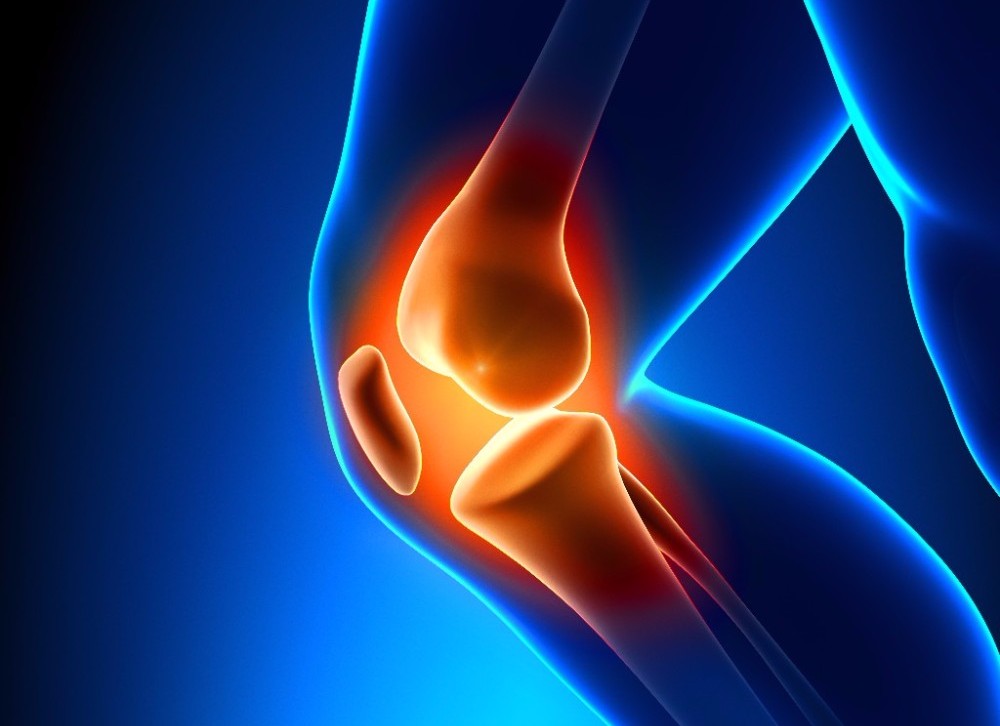
Anterior knee pain
- Patellar tendonitis most common
- See our post here on patellar tendonitis
- Chondromalacia
- Fat pad impingement
- Bike fit suggestion: increase saddle height
- Advanced with evaluation of foot: shoe insert, cleat wedges
Medial knee pain
- Pes anserine bursitis
- MCL/knee capsule irritation
- Bike fit suggestion: move cleats outward
- Advanced with evaluation of foot: shoe insert, cleat wedges
Lateral knee pain
- Iliotibial band syndrome it band syndrome
- Hamstring strain (biceps femoris)
- Bike fit suggestion: lower saddle height, move clears inward (toward bike)
Posterior knee pain
- Hamstring tendonitis
- Hamstring train
- Calf strain
- Bike fit suggestion: Lower saddle height
Evaluation of Cycling Knee Pain
Evaluation begins with a thorough history, including details on your personal history of cycling, and bike fit. Our sports chiropractor will take you through various range of motion, orthopedic, functional movement, and strength/endurance testing. After the evaluation, a working diagnosis is developed and treatment begins.
Treatment for Cycling Knee Pain
Most cases of knee pain from cycling improve with a combination of manual therapies including Active Release Technique, Graston Technique, and joint mobilization. A individual exercise routine will be prescribed as well to strengthen/stretch the affected tissues to reduce pain and dysfunction quickly. Our cycling doctor will help construct a cycling training plan to get back to riding pain free; some bike fit suggestions may be necessary.
Schedule today to get your knee pain properly diagnosed at our Mission Valley, San Diego office. Both Dr. Travis Rose, DC CCSP and Dr. Kevin Rose, DC DACBSP are trained to treat cycling injuries and are both avid cyclists and triathletes themselves. Dr. Travis Rose, DC CCSP has additional training in Bike Fit analysis for health care providers.
PEAK FORM NEWSLETTER SIGN UP
Our Office
